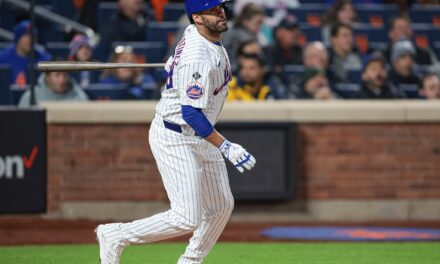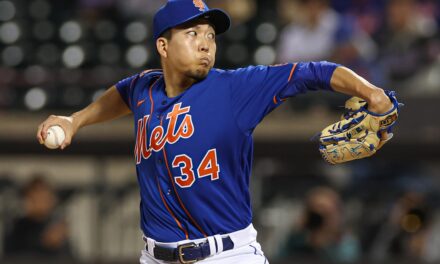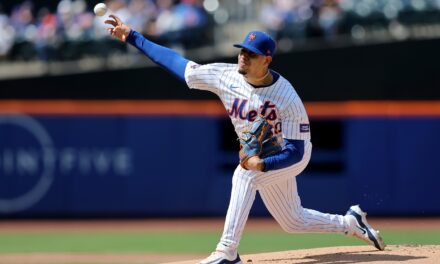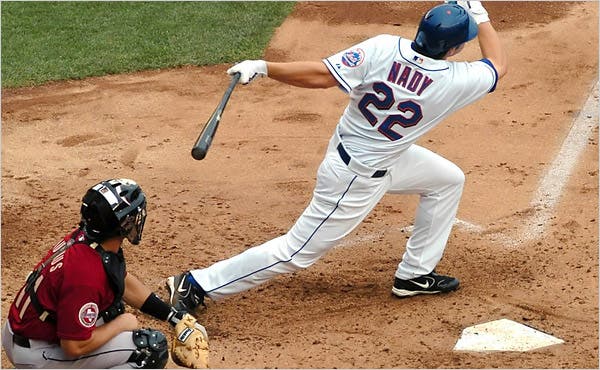
Photo from New York Times
It’s a shame that the 2006 Mets’ pitching depth was as barren as it was. Injuries to Pedro Martinez, Brian Bannister, and Victor Zambrano lasted through July and August, ultimately forcing the organization to make trades for Orlando Hernandez and Oliver Perez. The veteran Hernandez would be the team’s most reliable arm behind Tom Glavine, only costing them a Triple-A starter (Evan MacLane).
Perez, meanwhile, not only ushered in a two-contract, four-year era of — well, Oliver Perez, but he also cost the Mets one of their more promising bats in Xavier Nady. Nady’s numbers after leaving Queens don’t necessarily paint a picture of a star that got away, but in one of Met history’s most feared lineups, his role has flown under the radar for too long.
Prior to his stint with the Mets, Nady was a former first-rounder, with only two full seasons and a 1.6 bWAR to his name as a San Diego Padre. However, the Mets acquired him in November of 2005 in exchange for outfielder Mike Cameron, who posted nearly double Nady’s win share in his year and a half with New York.
For the first transaction of the offseason, it drew a lot of questions. There were concerns about Nady’s defensive limitations as a corner outfielder, along with not not having enough power to fill in at first base. Despite this, general manager Omar Minaya remained enthused with Nady’s minor-league numbers (which included a 1.019 OPS in 74 games with the Padres’ Triple-A affiliate in 2004), and he was right.
Reeling in Carlos Delgado from the Marlins a week later annexed Nady to right field, where he would eventually get the Opening Day nod over Victor Diaz. Nady went 4-for-4 with two doubles against Livan Hernandez and the Nationals, ending the conversation of who should be the everyday right fielder.
Through the first month of the season, Nady would hit .311/.337/.578 with a .310 BABIP and a wRC+ of 127. On a team that would send five of its everyday players to the All-Star-Game, Nady’s six home runs and 36.4% hard-hit rate were second on the team behind Delgado’s nine and 51.5%. The right fielder also slugged .576 which ranked 15th among qualified big-league outfielders.
His production would dip back toward the surface in May before an appendectomy kept him on the injured list for three weeks. Nady got right back to business upon his return, hitting .258/.292/.484 into the second half, which became a pleasant surprise at the bottom third of the order. Through his first 75 games with the Mets, Nady’s 12 long balls nearly matched his career high (13) set the year prior.
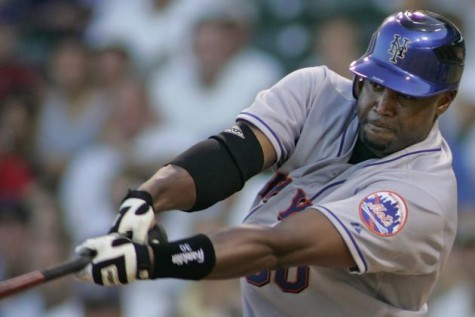
Much like Jose Valentin at second base and John Maine every fifth day, Nady’s value was in large part determined by the alternative options. Carlos Beltran had been posting MVP-type numbers in CF, but over in left, Cliff Floyd was starting to wear down. While Endy Chavez bailed the 34-year old Floyd out on the defensive side, Nady ultimately emerged as a formidable power bat with three years of team control and a knack for hitting against lefties (.914 OPS and .217 ISO).
Then, just a few weeks after his clutch go-ahead hit against Pittsburgh on the Fourth of July, Nady was traded to the Pirates. After setup man Duaner Sanchez was lost for the season in a taxi-cab accident, the Mets reluctantly sent Nady packing for trusted reliever 41-year-old Roberto Hernandez. Pittsburgh also threw in struggling starter Oliver Perez (6.0 BB/9 and a 6.63 ERA in his first 15 starts of the season).
Nady’s contributions to the Pirates did little to change the fact that the team would lose 95 games, and then 94 in his first full turn with them the following year. All that losing, however, did little to change the fact that he could rake.
Nady would more or less repeat his 2006 campaign, albeit raising his OPS from .790 to .805 and cracking 20 homers. His value as a player would peak in 2008, when a first-half rampage which he hit .330/.383/.535 put him in the center of a blockbuster trade with the Yankees.
Once the shorter end of a puzzling acquisition and later a sacrificial lamb for the Mets’ bullpen needs, Nady was now the centerpiece of a deal that brought back a triad of young talent in Jose Tabata, Ross Ohlendorf, Jeff Karstens, along with righty Daniel McCutchen to Pittsburgh.
Nady would undergo Tommy John surgery in April of 2009, and besides a role off the bench in 119 games with the Chicago Cubs the next season, he never again hold down a job at the big-league level. Nady would then bounce between six clubs in five years: the Diamondbacks in 2011, then the Nationals and Giants in 2012, a split minor-league affair with the Royals and Rockies in 2013, and finally a 42 at-bat homecoming with the Padres in 2014.
A Justin Turner or Nolan Ryan he is not, but was an exciting Met who certainly warranted more time on the roster – Nady often gets lost in the shuffle of mid-2000s Met outfielders.


